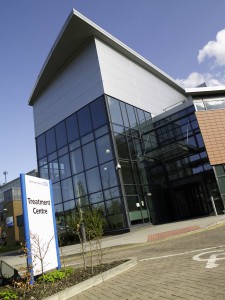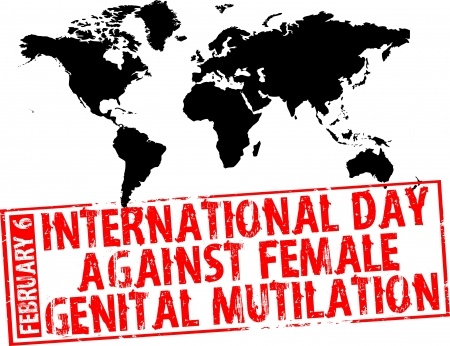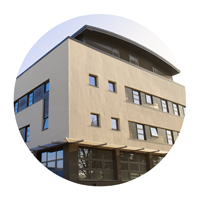International Day of Zero Tolerance to FGM is just around the corner aiming to raise awareness of female genital mutilation and promote its eradication.
Estimates suggest that about 20,000 girls, aged 15 or under and living in the UK, are at risk of Female Genital Mutilation (FGM). 66,000 women are also living with the after effects. (source: www.nhs.uk).
Female Genital Mutilation is a term used to describe procedures that involve partial or total removal of the female genitalia for non-medical reasons. FGM is a deeply rooted cultural practice that takes place in 28 countries across Africa and also Yemen, Iraq, Iran, Saudi Arabia, Malaysia and Sri Lanka.
This practice is illegal in the UK. It is also illegal to take a British citizen abroad for FGM, or to help someone trying to do this. Anyone who attempts to take a child out of the UK for FGM faces 14 years in prison. Female genital mutilation can also be referred to as ‘female circumcision’ or ‘female genital cutting.’
Severe pain, bleeding and wound infections are some of the immediate effects. Long term consequences can include:
- Kidney impairment and possible kidney failure
- Chronic vaginal and pelvic infections
- Persistent urine infections and difficulty passing urine
- Complications in pregnancy and newborn deaths
- Pain during sex
- The need for later surgery.
FGM causes long-lasting physical and psychological damage.
Alison Byrne, specialist midwife for FGM at the Trust, highlights there are four types of FGM: “Clitoridectomy is the first type of FGM. This is partial or total removal of the clitoris. The second type is excision where part or all of the clitoris and the inner labia (lips that surround the vagina) is removed, with or without removal of the labia majora (larger outer lips).
“Infibulation is the third type. This is the narrowing of the vaginal opening by creating a seal, formed by cutting and repositioning the labia. Other harmful procedures to the female genitals is the final type of FGM. Procedures include: piercing, cutting, scraping and burning the area.”
Alison adds: “The African Well Women’s Service was launched by me and Teresa Ball in 2002 at the Trust. This is a midwifery led service and is one of only 14 across the UK. The service is there to help and support women both physically and psychologically who have suffered from FGM.”
For more information on female genital mutilation, visit the World Health Organisation website (www.who.int). You can also call the NSPCC’s FGM helpline on 0800 028 3550.
International Day of Zero Tolerance to FGM takes place on 6 February 2015.
Members of the public are invited to come along to Sutton Coldfield’s Gracechurch shopping centre this Saturday 31 January between 9am and 5pm and visit the Heart of England NHS Foundation Trust stand to pick up information about plans being proposed to change surgical services across the region.
 The aim of the stands is to give locals the chance to gather information being distributed which explains the proposals which aim to create specialist surgical centres at the Trust’s three hospital sites locally to them and at their own convenience. As well as information stands, the Trust, which runs Good Hope Hospital, has been running a series of public engagement meetings as part of the consultation which commenced in October 2014. These events give clinical leaders from the hospital an opportunity to listen to what patients and the public think of the proposed re-design and what they want from the services in the future.
The aim of the stands is to give locals the chance to gather information being distributed which explains the proposals which aim to create specialist surgical centres at the Trust’s three hospital sites locally to them and at their own convenience. As well as information stands, the Trust, which runs Good Hope Hospital, has been running a series of public engagement meetings as part of the consultation which commenced in October 2014. These events give clinical leaders from the hospital an opportunity to listen to what patients and the public think of the proposed re-design and what they want from the services in the future.
Professor Matthew Cooke, deputy medical director, is actively encouraging local people to have their say on proposals which aim to create specialist surgical centres at the Trust’s three hospital sites. The Trust is confident that these changes will help it to provide the very best care possible to patients.
He said: “We are encouraged by the feedback received so far, and are looking forward to the next three meetings. It shows that the vast majority of people (79%) are supportive of creating specialist centres where they can have their operation, whilst having the convenience of the out-patient appointments, investigations and post-operative care at their local hospital.
“We recognise that most of the challenges have focused on transport and we are working hard to find solutions. We will also be working closely with our own staff over the coming months to understand and address their concerns.
“There is, undoubtedly, a lot more work to do and following the end of the initial public engagement period in February 2015, there will then be another public consultation, led by the Clinical Commissioning Groups, in the summer before the final plans are then confirmed.”
Along with the Gracechurch shopping centre stand, there will be future events at locations across the region. There has also been a public information event confirmed to be held on Wednesday 4 February at the Ramada Jarvis Hotel in Sutton Coldfield, Penns Lane, Walmley, B76 1LH.
Start times for each venue are 10am, 1pm and 6pm, when there will be a presentation followed by a group Q&A session. During the periods between presentations, the team will be on hand to answer any questions on a drop-in basis. Verbal and written feedback from all of the meetings and events will, as always, be taken.
All of the feedback from the Trust’s meetings is being recorded and will be summarised in a public report in March 2015 and will be published in full on Trust’s website.
Since the public consultation’s launch in October 2014, the Trust has:
- sent 60,000 information booklets and feedback forms to the public, staff and other key stakeholders
- shared information with its 100,000 members, 937 community groups, 55 libraries, 82 pharmacies and 420 GPs
- addressed 600 members of the public
- held 13 public meetings
- distributed information in four shopping centres
- attended 7 ward committee meetings.
To date, 124 people have sent in written feedback, with 79% supporting the Trust’s plans to create centres of excellence for surgery with outpatient appointments remaining at their local hospital’ and 11% disagreeing.
Anyone wishing to find out more about the proposals and give their feedback should visit the Trust’s website at www.heartofengland.nhs.uk/surgery-reconfiguration; email: surgeryreconfiguration@heartofengland.nhs.uk; call 0121 424 3838 or send a tweet to @heartofengland.”
• The number of patients attending A&E who have been recorded as being drunk. i.e. with a primary or secondary diagnosis of self-harm through alcohol poisoning. T51.92 ( Toxic exposure to alcohol – self harm)
• I would like this information broken down for each of the last four complete financial years plus the 2014/15 financial year up until the end of December 2014
• I would also like the figure for the total number of A&E attendances in each period.
| Year | Total Attendances | Alcohol Related |
| 2010/11 | 235477 | 594 |
| 2011/12 | 239208 | 722 |
| 2012/13 | 239418 | 594 |
| 2013/14 | 237724 | 594 |
| 2014/15 (YTD) | 188857 | 471 |
The above table shows the total number of each of the last 4 financial years (these figures do not include attendances at Solihull walk-in centre). The “alcohol related” numbers are where the attendance has any clinical coding of alcohol in their diagnosis (both primary and secondary). The following codes, checked by our clinical coding team, were used in the query:
- patient being drunk – F10.0 (Acute intoxication/ Drunkenness)
- self-harm through alcohol poisoning – T51. *(alcohol poisoning) + X60.* (intentional self-harm)
Despite these codes being used, there were no cases that were recorded as “self-harm”. This is most likely due to the A&E system not using exactly the same diagnosis codes listed above and the presenting complaint field being a free text option. This makes it difficult to identify those patients who are specifically alcohol related due to self-harm.
1. What was the total number of shifts for a) doctors b) nurses in your Accident and Emergency Department(s) over that period? 95 and 112 respectively
2. How many of those shifts – again for a)doctors and b)nurses – were covered by locum/ agency staff? 55 and 28 respectively
3. What was the highest amount paid for a shift for a) an individual doctor b) an individual nurse in A and E over the specified dates? £800 and £645 respectively.
4. What grade/band was that individual a)doctor and b)nurse – and how long was their shift? Consultant shift 8 hours and Band 7 Nurse shift 11.5 hours
4. What was the total spend on locum/agency staff in A and E over the specified dates? £100,139.00 NB We have excluded bank nurses as it did not explicitly ask for those costs. If you wish to include bank nursing for the same period it would increase by £12,655 to £112,794.
EDITED 03/03/15 TO CORRECT CALCULATION ERROR
The response to your query is detailed below:
- What are your current provisions for procuring Medical Locum Agency Doctors:
Direct Call Off through Health Trust Europe Framework
- Are your agency rates:
Fixed Ceiling Commission Rates through the Framework with ability to negotiate lower rates
- Do you find that rates are escalated over the contract rates?
Commission Rates are never escalated. Doctor’s pay rates are occasionally escalated for difficult to fill shifts or specialties
- Do you deduct breaks from agency doctors?
Yes where breaks are taken
- Do you pay reduced rates for non-resident shifts?
Yes
- Do you pay for travel and/or accommodation costs for agency doctors?
We pay travel when it is requested but do not pay accommodation
- Do you use ‘off framework’ agencies, ie, those not covered by your framework?
In exceptional circumstances where requirements cannot be filled by framework agencies.
a) Compliance is Checked by Locum Bank Team and doctors only booked if compliance is provided in line with that required from a framework supplier
b) Terms and Conditions are agreed by the Recruitment Services Manager ensuring best value for money.
- Please state which framework you use for the provision of Medical Locums?
Health Trust Europe
- What was your total spend (excluding VAT) for 2013/2014?
https://hgs.uhb.nhs.uk/foi3166-medical-locum-spend/
- Do you use a Direct Engagement/VAT Mitigation Model, eg, Staff Flow, 24/7 time, Staffflow?
We operate a direct engagement model supported by the 247 Time software package.
The data we require are as follows (for period 1st January 2014 and 31st December 2014)
ED attendance date Age or date of birth Gender Reason for ED attendance
We also require the total ED attendances for 2014.
The total number of attendances in calendar year 2014 was 247,725
Hospital Site Attendances
Good Hope 82,911
Heartlands 119,868
Solihull 44,946
Trustwide 247,725
Under the Freedom of Information Act, please provide the following information:
The number of scheduled operations that have been cancelled in 2013-14 and 2014-15 to date due to bed shortages (example codes may be 2.1 ICU/HDU beds unavailable and 2.2 Ward beds unavailable) and a break down of the hospitals at which the cancellations occurred. For 2013-14 and 2014-15 to date, the number of scheduled operations that were cancelled because of staff shortages (example codes may be 2.5 Surgeon unavailable – leave, 2.6 Surgeon unavailable – other, 2.7 Anaesthetist unavailable – leave, 2.8 Anaesthetist unavailable – other and 2.9 Theatre staff unavailable), again broken down by hospital.
Cancelled Ops April 13 to March 14 staff Shortages
| Reason | Good Hope | Heartlands | Solihull | Grand Total |
| Staff unavailable – anaesthetist | 1 | 2 | 3 | |
| Staff unavailable – surgeon | 15 | 26 | 30 | 71 |
| Staff unavailable – theatre team | 15 | 39 | 54 | |
| Grand Total | 31 | 67 | 30 | 128 |
Cancelled Ops April 2013 – March 2014 Beds
| Reason | Good Hope | Heartlands | Solihull | Grand Total |
| No bed | 38 | 120 | 14 | 172 |
| No critical care bed | 3 | 20 | 7 | 30 |
| Ran out of time – due to bed delays | 8 | 13 | 9 | 30 |
| Grand Total | 49 | 153 | 30 | 232 |
Cancelled Operations Staff Shortages 2014 – 2015 validations
| Reason Desc | BHH | GHH | SOL | Grand Total |
| Staff unavailable – anaesthetists | 1 | 1 | 2 | |
| Staff unavailable – anaesthetist | 1 | 5 | 2 | 8 |
| Staff unavailable – surgeon | 16 | 11 | 8 | 35 |
| Staff unavailable – theatre team | 29 | 14 | 1 | 44 |
| Grand Total | 47 | 30 | 12 | 89 |
Cancelled Operations 2014 – 2015 Beds
| Reason Desc | BHH | GHH | SOL | Grand Total |
| No bed | 133 | 117 | 37 | 287 |
| No critical care bed | 5 | 3 | 8 | |
| Ran out of time – due to bed delays | 15 | 6 | 2 | 23 |
| Grand Total | 153 | 123 | 42 | 318 |
Does Heartlands Hospital adhere to a CCG aesthetic policy? HEFT adheres to the CCG aesthetic policy.
If yes, is this policy applied to patients on a breast reconstruction pathway following cancer?
No It is not applied to breast cancer patients, it is only applied to benign breast hypertrophy for reduction procedures and to developmental deformities of the breast (tuberous Breasts ) which require breast augmentation and gynaecomastia patients.
In the last 12 months, how many breast cancer patients have had any elements of their reconstructive surgery declined for funding? No. There haven’t been any problems regarding funding any procedures for breast cancer patients over the last 12 months
If no aesthetic policy is applied, does Heartlands Hospital apply any other CCG criteria to breast reconstruction patients? N/A
- How many reverse osmosis systems do you have?
Four fixed systems and 35 portable machines
- The manufacturer of these.
- The age of these.
- Location of these.
Purite system at Heartlands Hospital Renal Unit installed 2005
Elga system at Runcorn Road Dialysis Unit installed 2006
Elga system at Solihull Hospital Renal Unit installed 1997
Combination of Elga and Purite systems at Castle Vale installed 2008
The portable systems are installed at home haemodialysis patient properties across the region or in storage awaiting use at BHH
Endoscopy at BHH- Purite system installed 2005
Endoscopy at Solihull- Elga system installed approximately 2008
Endoscopy at GHH- Elga system installed approximately 2008
Theatres at BHH- Elga system installed about 2011
Urology at BHH- Elga system installed about 2014
- Has an intended replacement date been recorded? No replacement dates for these units have been recorded
Please can you tell me how many times over the past five years the trust has enacted the protocols for an ‘internal incident’ or a ‘major incident’. Could you also tell me how many times the ‘internal incident’ or ‘major incident’ was declared publicly? Please provide a date for each incident and how long it lasted.
| DATE | INCIDENT TYPE | SITE | INCIDENT DECLARED | TIMES | PUBLICALLY DECLARED |
| 23-11-2010 | Suspect bomb | GHH | Internal disaster | 08.20-14.00hrs | No but did make the press/news due to nature of incident |
| Nov 12 –Jan 13 | Capacity issues x4 | BHH | Internal disaster | All stood down as inappropriately called | No |
| 13-11-2012 | A/E overwhelmed | BHH | Internal disaster | 21.35-00.00hrs | No |
| 16.05.2012 | Power failure | BHH | Internal disaster | 12.05-18.00 initial incident but continued until afternoon of 18th May. | No |
| 12.01.2013 | Maternity power failure | BHH | Internal disaster | 17.34-21.15hrs | No |
| 26.08.2013 | Maternity fire | BHH | Internal disaster | 00.30-04.00hrs | No but did make twitter, Birmingham updates etc |
| 25.04.2014 | IT failure | SH | Internal disaster | 11.20-15.05hrs | No |
| 02.07.2014 | Shooting/civil unrest | BHH | Internal disaster | 20.21-20.50hrs | No, did make news due to civil unrest in Sparkbrook. |







